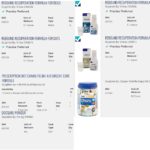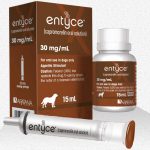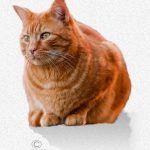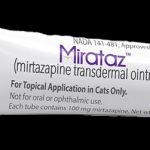Ron Hines DVM PhD
Anorexia is the medical term for a lack of appetite. It can be due to physical or emotional issues. Not eating is one of the most common reasons worried pet-owners bring their cats and dogs to their veterinarian. A day, or even two, in which your pet loses interest in its food is not that unusual. Sometimes it is associated with recent unpleasant or traumatic events: a trip to the groomer or animal hospital, a new brand of diet, turmoil in day-to-day living. Dogs and cats are creatures of habit, they do not appreciate change. For some it is due to separation anxiety, for others a new two or four-footed family member. But when lack of appetite persists for more than a day or two, or if your pet actually loses weight, runs a fever or develops any physical signs of illness, it is time to bring him/her in for a checkup.
What Are Some Of The Reasons that Dogs And Cats Lose Interest In Their Food?
Some Minor Reasons:
Your Food Tastes Better Than My Food Syndrome
This is a very common problem. I see it most commonly in smaller and toy breeds of dogs – but my Labrador retriever, Maxx, is not above a longing for table scraps. Cats are certainly not immune to this behavior either. Our pets are quite intelligent – particularly when it comes to the taste and aroma of food. After their first bite of table food (particularly meaty items), they instantly know that your food tends to taste better than what you pick up for them on the pet food isles. Even if it doesn’t always taste better, they remember the time it did and assume it will. I am as guilty of this as anyone. Our cat Oreo and Maxx wait patiently for anything to “fall” from the dining room table. It is only when they realize that they are not going to get anything that they wander back to their food dishes. I have no problem with you giving your pets treats of human quality food. But you must not let these scraps constitute more than 20% of your pet’s diet and there are certain foods that must not be given. They include, grapes, raisins, avocado, chocolate, anything with small or sharp bones or sugar substitutes like xylitol or heavily spiced foods. If anything you give caused diarrhea, a tummy ache, vomiting or constipation, never give it again. It may not be that toy breeds are any more guilty of developing this problem than large breeds. It could be that the owners of toy pets just tend to baby them more and that there are rarely enough table scraps to constitute more than 20% of a large dog’s diet. An alternative solution that will please everyone is to just cook for your pets.
The Picky Eater Syndrome
Some pets – like some humans – are just born finicky eaters. This can be a blessing. Scientists have found that the length of life in many species is lengthened by the consumption of fewer calories. But when a nurturing person is disturbed by a picky eater pet, it can become a perceived curse. Some pets just enjoy the attention that a worried owner pays to them when they hover over their food dish not eating. They can quickly pick up on this. But when a disinterested party, such as a groomer, pet handler, vet tech or neighbor tells you that your pet is too thin, a visit to your veterinarian (and perhaps a diet change) is in order. As I mentioned, many picky eaters will go a day or two without eating much. That is no cause for alarm if that is the confirmed constitution of your pet and its weight and general health remains normal and steady. When clients call me after hours at home for advice for a pet that will not eat, I often suggest the “Vienna Sausage Test”. Vienna sausages are small smoked, canned wieners with a pungent taste and aroma. They would be a horrible diet choice for a dog or cat – but few pets can refuse a bit of one. I tell clients to offer a quarter link to their pet and call me back if he/she won’t eat it. If your pet doesn’t show interest in it or some other favorite snack, it might be time for you to set an appointment with your veterinarian the following day – or earlier.
More Serious Reasons:
Many of the serious diseases that our cats and dogs suffer from are accompanied by a drop in appetite or weight. There are too many of them to list here – although you will find an article about most of them on this website. However, they are all accompanied by one or more abnormal findings other than lack of appetite. If your pet is losing weight it should be promptly examined by your veterinarian. Sometimes, a physical examination is all that is required. Things such as infections of the skin, eyes and ears can often be diagnosed and treated – without further complicated testing.
Intestinal Worms?
It is common for pet owners to be suspicious that perhaps their dog or cat is losing weight because of intestinal worms. That is almost never the case in a pet living in an average American household. Pet stores, patent remedy merchandisers, and companies like Hartz, Walmart and PetSmart encourage that myth because non-prescription worm medications are big sellers. Unfortunately, that myth is responsible for many pet owners waited much too long before taking their dog or cat to their veterinarian to discover the real cause. When intestinal worms are involved in weight loss, it is usually accompanied by diarrhea and its underlying cause is a heavy parasite infection (load) caused by unsanitary conditions, high-stress environment, crowding, concurrent other diseases, starvation or malnutrition. You can read about those parasites in cats here and in dogs here. There are also dogs that have a parasite problem because they are particularly fond of nibbling on the stools of other dogs while visiting doggy parks. If your dog shares that habit, the best way to prevent worm infections is one of the monthly heartworm/flea preventatives that contains an intestinal worm medication as well. Common tapeworms (such as dipylidium) although disgusting, rarely if ever cause weight loss in dogs and cats.
Dental Problems?
Tartar and periodontal (gum) disease are serious health issues that need attention. Read about that here. But like, intestinal worms, mouth issues rarely cause decreased appetite or weight loss. When they do, it is generally due to mouth infections having spread to other places in the body. Although most people would expect tooth and gum problems to affect their pet’s appetite as it would for us – it rarely does. That is probably because dogs and cats do not chew their food very much – at least not the kind of foods we generally feed them. It is only when dental problems have become severe enough to cause systemic disease that your pet’s appetite might become affected. Nevertheless, your veterinarian’s examination will include an examination of your pet’s mouth. If it is found that your dog or cat has severe periodontal gum disease or heavy tartar buildup, having its teeth cleaned is a wise idea. I have seen a few cases where this did improve appetite – particularly in cats with odontoclastic resorption issues. In rare occasions, your veterinarian might even identify an object lodged in your pet’s mouth or throat. Veterinarians also become suspicious of a physical mouth problem when a pet will lap up its normal diet when it is blended into a liquid form. That can be the novelty of a new form of presentation, but it can also be due to scaring (strictures) of the esophagus, megaesophagus, tumors or developmental defects such as persistent right aortic arch.
Your Veterinarian’s Approach:
A Stool Specimen
When your veterinarian cannot diagnose the cause of your pet’s lack of appetite through a physical exam, he/she will probably suggest more tests. Often a request for a fecal specimen will be one of them. This isn’t just because your veterinarian thinks that common intestinal parasites are the likely cause of your pet’s poor appetite. It is because many diseases of the stomach and intestine produce a stool that is abnormal in specific ways (color, consistency, non-food material, excess mucus, blood). Lack of liver or pancreatic enzymes (see the tests) often give a pet’s stool a distinctive color and consistency. A loose or excessively firm stool also hints at intestinal motility or hydration issues. All of those issues can lessen appetite.
A Blood Work Panel
The next step in discovering the cause of a lack of appetite is often an examination of your pet’s blood and urine. Read about blood and urine tests in general here, and specific tests here. These sophisticated analysis machines tell your veterinarian so much about what is going on in your cat and dog’s body. Even if these initial blood tests do not tell your vet what the problem specifically is, they usually tell your vet that the problem is a real physical ailment rather than an emotional one, and they often rule out some of the possible physical causes. It is very unusual for a pet to have completely normal (or near-normal) blood test results when it has a serious disease that affects appetite – particularly if your pet has lost significant weight (10% or more).
X-rays and Ultrasound
If your pet has lost significant weight due to decreased appetite and the blood work comes back normal or near-normal, the next step will probably be a suggestion that you agree to to x-rays and/or ultrasound examination of your pet’s abdomen and chest. Many changes are quite obvious and easily for veterinarians in general practice to detected. However, some are subtle and not easily recognized. When that is the case, it is best if the films and/or ultrasound images are reviewed or performed by a veterinarian who specializes in reading those images (a veterinary radiologist).
How Can I Get My Dog Or Cat To Eat?
Aroma
The aroma of food is extremely important to your pet. In most cases, a little dressing of a premium gourmet canned pet food or home-cooked broth on top of your pet’s regular food is all that it will take. Many cats appear to become addicted to pungent fish flavors, so I suggest that only turkey, chicken or beef-based foods be used for this purpose. It doesn’t take much. Adding too much tasty topping simply begins another problem – refusal to eat a balanced diet.
Location
Dogs and cats that are picky eaters will sometimes eat better when their food dish is placed in a new location. Sometimes, using a different container will help. This probably has more to do with scent than vision.
Presentation
Often a pet is most interested in its food soon after it is put down. So taking the food bowel up after a reasonable period of time and replacing it later sometimes helps. However, there are other pets that are periodic munchers whose total food intake is much larger when the dish is always available. Only trial and error will tell for your pet.
Time of Day
Some pets eat better in the morning or at night or when you come home from work. Some eat more when undisturbed while others like your company or the company of other pets when they are eating.
Change Food Brands
Most pets will eat more and gain weight when fed canned diets versus dry food. This is because the odor of canned food is more attractive to most of them and also because canned diets tend to be higher in calories on a dry weight basis. However, I see many more pets with obesity and dental problems when they are fed canned diets. Read about that here.
If you are already feeding a canned diet, and are dissatisfied with your pet’s appetite or weight, try a different brand. Never make a diet change abruptly – do it gradually over a week or so. There are too many brands for me to offer specific suggestions other than to say that you are always safer feeding a product produced by a large, national pet food company. These are the only companies with the resources for stringent quality control and with sufficient feedback from pet owners for them to recognize a problem when it does occur. There is absolutely no problem with homemade diets if they are nutritionally balanced. That is not as easy as purchasing something ready-made in a sac or can – but it can be done. Read about home cooked diets here.
Exercise
Dogs and cats usually have more appetite after periods of activity. This can be playing with a toy, fetching a ball, a walk in the park, or a simple trip around the block in your car. Nothing too strenuous.
Spay/Neuter
Pets of both sexes that have been neutered tend to eat more and gain weight. That is particularly true when they were neutered at too young an age. In most cases overeating and obesity are the issues. However, if your pet is by nature a picky eater, it could conceivably be a benefit – although I would be loath to suggest neutering a dog or a cat for that reason alone.
Puppies and Kittens
Growing pets need considerably more food for their size than adult pets. So, the effects of not eating are much greater in them and these effects occurs sooner. Puppies and kittens that are nutritionally deprived either by lack of appetite or starvation may never reach their full body-size potential. They might also develop soft teeth, floppy ears and bowed legs that can never be completely corrected. So take these youngsters to your veterinarian the moment you notice that their appetite has lessened. It is normal for a puppy or kitten’s appetite to gradually decrease once the majority of its growth has occurred. Try not to mistake that for a problem. Normal growth curve graphs for most dog and cat breeds are available online.
How Should I Care For A Pet That Won’t Eat?
When your dog or cat is ill or injured and cannot or will not eat, you need to do all you can to supply it with critical nutrients. This is because those nutrients are essential for healing. Sometimes, encouragement and feeding the pet canned food from your hand is all that is needed. If this is to go on for a while, it is better to use a nutritionally balanced canned dog or cat food rather than unsupplemented boiled chicken or beef. Try a premium or gourmet brand or something you pick up from your vet. There is absolutely no problem in offering cat brands to dogs – cat diets are often preferred by dogs. The reverse is not true – some dog foods are not nutritionally adequate for long-term use in cats. Pets, like kids, love to be pampered that way, so don’t continue the practice longer than necessary or your dog or cat may resist a return to its regular diet.
If your pet can’t or won’t eat when offered food in this way, it will need to be fed a liquid or liquefied diet through a syringe or turkey baster. Various liquid and semi-liquid diets are available from your veterinarian. You can also prepare these foods just as well at home if you have the time. The food needs to be blended in a blender until it is fine enough to pass through the tube or syringe tip you are using. For tiny critters, I often enlarge the orifice in the syringe tip with a 1/8 inch drill bit, so the food particles pass easily.
What Can My Veterinarian Do?
A visit to your veterinarian is the best way to determine if your pet’s lack of appetite is a serious or minor problem. If the exam and tests determine that the problem is minor, trying some of the things I suggested earlier should help. If an underlying disease is detected, hopefully it can be cured with proper care and medicine. In the meantime, your veterinarian might suggest diets like these: 
Medications That Stimulate Appetite:
If your pet has lost substantial weight, your veterinarian may decide that the best thing to do would be to attempt to stimulate its appetite with medications.
Entyce®
The newest veterinary entry of appetite stimulants is Entyce®. Read about that medication through the previous link and dog owner experiences using it here. If your pet is a cat read here.
**************
Some of the appetite stimulant medications I mention are prone to side effects – particularly when the pet’s liver or kidney function is compromised. Many veterinarians believe that Remeron® (mirtazapine) or cyproheptadine have the least potential for generating worrisome side effects – as long as their dose is adjusted downward when illness prevents their normal metabolism and excretion. (read here)
Megesterol acetate (Megace®) is a powerful appetite stimulant in pets. However, it has many undesirable side effects including elevating blood sugar to unhealthy levels. It is suspected of causing diabetes in cats and Cushing’s-like adrenal gland problems. I only suggest it when other medications fail in end-of-life situations. The drug as an appetite stimulant is probably no more effective than oral prednisone or prednisolone.
Stanozolol (Winsterol-V®) is an anabolic steroid, also has powerful appetite-stimulating and weight-gaining properties. Similar drugs were once marketed to geriatric human patients. None I know of are any longer marketed in North America – chiefly due to the threat of its diversion to body builders. When it was available, veterinarians dispensed it as an appetite stimulant. The medication sometimes caused male traits to appear in female pets – similar to its effects on female athletes – particularly when it was given at high doses for long periods. With continued use, side effects are as bad, or worse than megesterol. These drugs also increase mood lability. (read here)
Feeding Tubes
In an animal hospital setting, delivering food via a nasal tube is the most efficient way to feed a pet that is reluctant to eat. It is also the least stressful way because even healthy pets often refuse to eat when hospitalized or kenneled. A small tube can be inserted up the nose or directly into the esophagus through a small incision. Feeding in that way is not painful.
The Hazards of Waiting Too Long With Cats
When an animal stops eating, its body relies on mobilizing fat reserves through its liver to provide needed calories. However, cats have evolved to not have this ability well-developed. When your cat eats less than about half of what it normally would and that persists for a two-week period, your cat might develop hepatic lipidosis (fatty liver disease). It can be fatal. So many veterinarians suggest beginning supplemental feeding early enough to avoid this problem. Another disadvantage cats have over dogs is that their daily protein needs are higher. So while a dog can live off of its stored fat for a considerable period of time, a cat has more trouble subsisting on fat calories alone – particularly when it is ill.
Prescription Diets
Dogs and cats are sometimes put on prescription diets because of a particular medical problem. Most pets accept these new diets – particularly if they are changed over to them from their old diet gradually. But other pets never accept these specialty commercial diets. When it has been suggested that your pet eat a prescription diet, I suggest you purchase only a few cans or a small bag first to see if your pet will eat it. If not, try a different brand or a different style of the same brand. But under no circumstances, force your pet to eat it to the point where it looses significant weight. The only exception is a diet that was formulated for weight loss. In some cases, the only prescription diet a pet will accept is one you prepare yourself at home. There are online veterinary nutritionists who can assist you in formulating nutritionally balanced recipes.
You are on the Vetspace animal health website
Visiting the products that you see displayed on this website help pay the cost of keeping these articles on the Internet.





